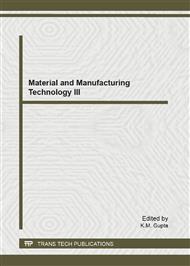p.662
p.667
p.672
p.677
p.682
p.686
p.691
p.699
p.704
Numerical Simulation of Cathodic Protection System
Abstract:
Cathodic protection (CP) systems are commonly designed by estimating the overall current demand and then developing an anode configuration sufficient to protect the structure. To a large extent the performance of a CP system is dependent on the skill and experience of the corrosion specialist. As the structures become more complex these traditional approaches may become less reliable. Given the factor it becomes imperative that corrosion engineers are able to predict the electric fields as part of the design process. The difficulty in making reliable estimates for cases can be overcome by using corrosion simulation software as a design tool. Not only can corrosion simulation software help with understanding complex corrosion behavior but it can also provide a rapid and economic assessment of CP system designs. In this paper two-dimensional mathematical model using the polarization properties of P110 and G3 as the solving boundary conditions, used numerical simulation software ANSYS to solve. In same time, a cathodic protection polarization simulating device was established. The changing tendency between the simulation results and experimental data matched well, which verify the correctness of modeling and accuracy of numerical simulation.
Info:
Periodical:
Pages:
682-685
Citation:
Online since:
July 2012
Authors:
Price:
Сopyright:
© 2012 Trans Tech Publications Ltd. All Rights Reserved
Share:
Citation:


